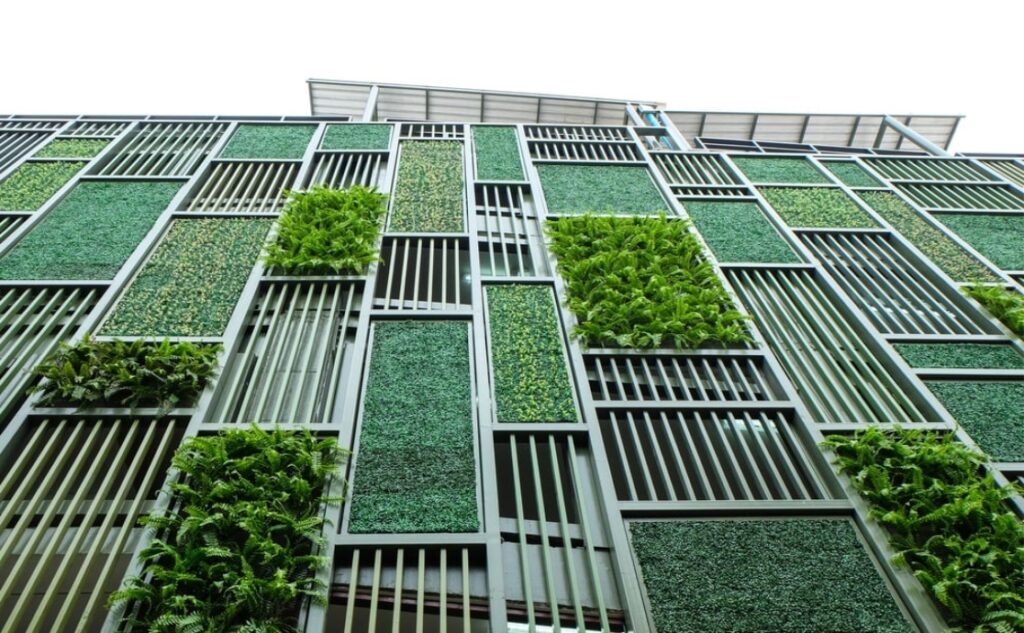
As India’s USD 3.5 trillion economy embraces sustainability, green construction chemicals are transforming the ₹70,000 crore construction industry, heralding a new era of eco-friendly infrastructure.
The global green construction chemicals market, valued at USD 6.2 billion in 2024, is projected to reach USD 11.8 billion by 2032 at an 8.3% CAGR, per a 2025 Allied Market Research report. These non-toxic, recyclable materials enhance building performance while slashing environmental impact, positioning India as a global sustainability leader.
Yet, regulatory hurdles and skill shortages challenge MSMEs in scaling a USD 5 billion domestic market by 2030.
Green construction chemicals, rooted in green chemistry and building practices, include low-VOC adhesives, eco-efficient admixtures, and sustainable waterproofing solutions. They improve indoor air quality by 30%, reduce cement usage by 15%, and extend structure lifespans by 20%, per a 2024 Mordor Intelligence report.
Unlike conventional chemicals, which contribute to 10% of construction waste and emit harmful VOCs, these materials cut landfill waste by 25% and are biodegradable.
India’s urban surge, fueled by PM Gati Shakti and PMAY, leverages these chemicals for resilient, low-maintenance infrastructure, per a 2024 CII report.
Indian and global companies are driving innovation. Pidilite Industries’ Dr. Fixit and Fevicol offer low-VOC adhesives, while BASF India’s admixtures lower cement emissions by 20%, per a 2025 ET Construction report. Fosroc India and Sika India deliver high-performance, low-emission waterproofing and flooring, reducing carbon footprints by 30%, per a 2024 SIDBI report. Asian Paints’ SmartCare, Ultratech Cement, GCP Applied Technologies (Saint-Gobain), and GreenBuild Products also lead, per a 2025 Business Standard report. MSMEs, supplying 40% of materials, benefit from the ₹50,000 crore PLI scheme and ONDC, boosting market access by 25%, per a 2024 SIDBI report.
The shift to green construction chemicals bolsters India’s economy. It cuts import reliance on petroleum-based chemicals by 20%, saving USD 1.5 billion annually, and enhances export potential to eco-conscious markets, per a 2024 UNCTAD report.
The sector supports 700,000 jobs, empowering rural communities through natural raw material sourcing, per a 2024 Nasscom report. Green buildings attract 10% higher investments, aligning with Make in India, Swachh Bharat, and SDG goals, per a 2025 Hindustan Times report.
Challenges remain. Regulatory approvals take 4–6 years versus China’s 2, stalling innovation, per a 2024 Nasscom report. MSMEs face ₹1–2 lakh monthly compliance costs, and power disruptions affect 20% of units. Only 5% of Skill India’s 2 million workers are trained in green chemical tech, and ONDC adoption lags at 15%, per a 2024 Nasscom report.
Public-private synergy is crucial. The public sector can mandate green building codes, offer tax rebates, and promote eco-labeling, per a 2025 MoHUA report. Private efforts, like BASF’s IIT collaborations and Pidilite’s sustainable supply chains, fuel R&D, per a 2025 Economic Times report. Experts propose Technology Upgradation Scheme subsidies, Skill India training, PM Gati Shakti’s 5G enhancements, and CII-led campaigns to drive adoption, per a 2025 LatestLY report.
The rise of green construction chemicals underscores India’s sustainable development commitment. Aligning policy, industry, and demand can make these materials mainstream, paving the way for a Viksit Bharat by 2030.
